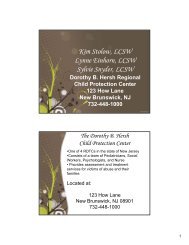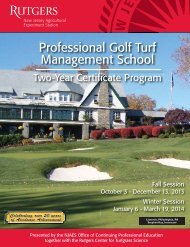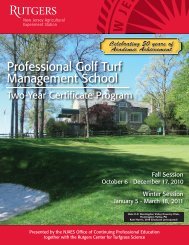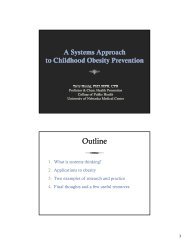Rethinking Child Custody, Domestic Violence - Rutgers NJAES ...
Rethinking Child Custody, Domestic Violence - Rutgers NJAES ...
Rethinking Child Custody, Domestic Violence - Rutgers NJAES ...
You also want an ePaper? Increase the reach of your titles
YUMPU automatically turns print PDFs into web optimized ePapers that Google loves.
should respond in these cases also threatens to diminish the need for outside evaluation orother expertise in these cases, undermining the legitimacy of a range of professionals whoearn their livings largely through custody work.Available evidence suggests that, with marked exceptions, most family courtscontinue to interpret partner violence as an instance of “high conflict” rather than asabuse and to view the illegitimate exercise of power and control to hurt and subjugateloved ones as different only in degree, but not in kind, from other types of animositiesand family problems that bring disputants in custody litigation to court. For a variety ofreasons that are beyond the scope of this article, family courts remain the sole provincewhere the discredited psychological and systems theories of family violence continue tothrive.There are mixed findings about whether the new mandates have changed theoutcomes in family court. A number of case reviews include shocking evidence ofmalfeasance by the family court, particularly in response to attempts by protectivemothers to call attention to partner abuse of themselves or their children But it is hard togeneralize from this work because it is largely based on self-reports from selected orvolunteer samples. What we can say with confidence, however, is that abusive partnerscontinue to be given primary or shared custody in an alarming number of cases, evenwhere abuse is well documented.When evaluators are asked about their practice with respect to abuse, a substantialproportion report that they not only consider domestic violence allegations, but also usedomestic violence assessment tools and make specialized referrals or protectiverecommendations when appropriate (Bow & Boxer, 2003). Gould et al (2007) report










